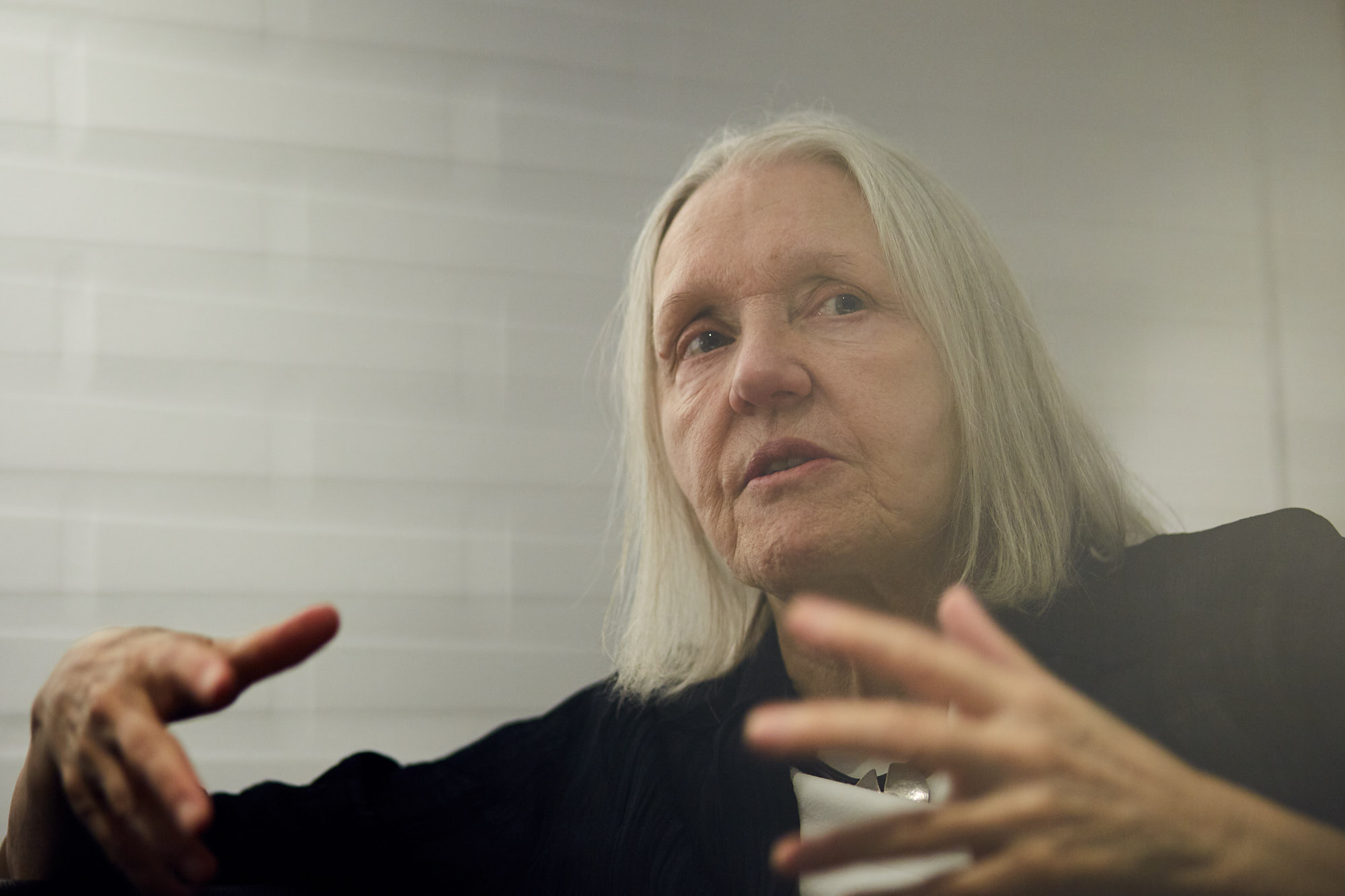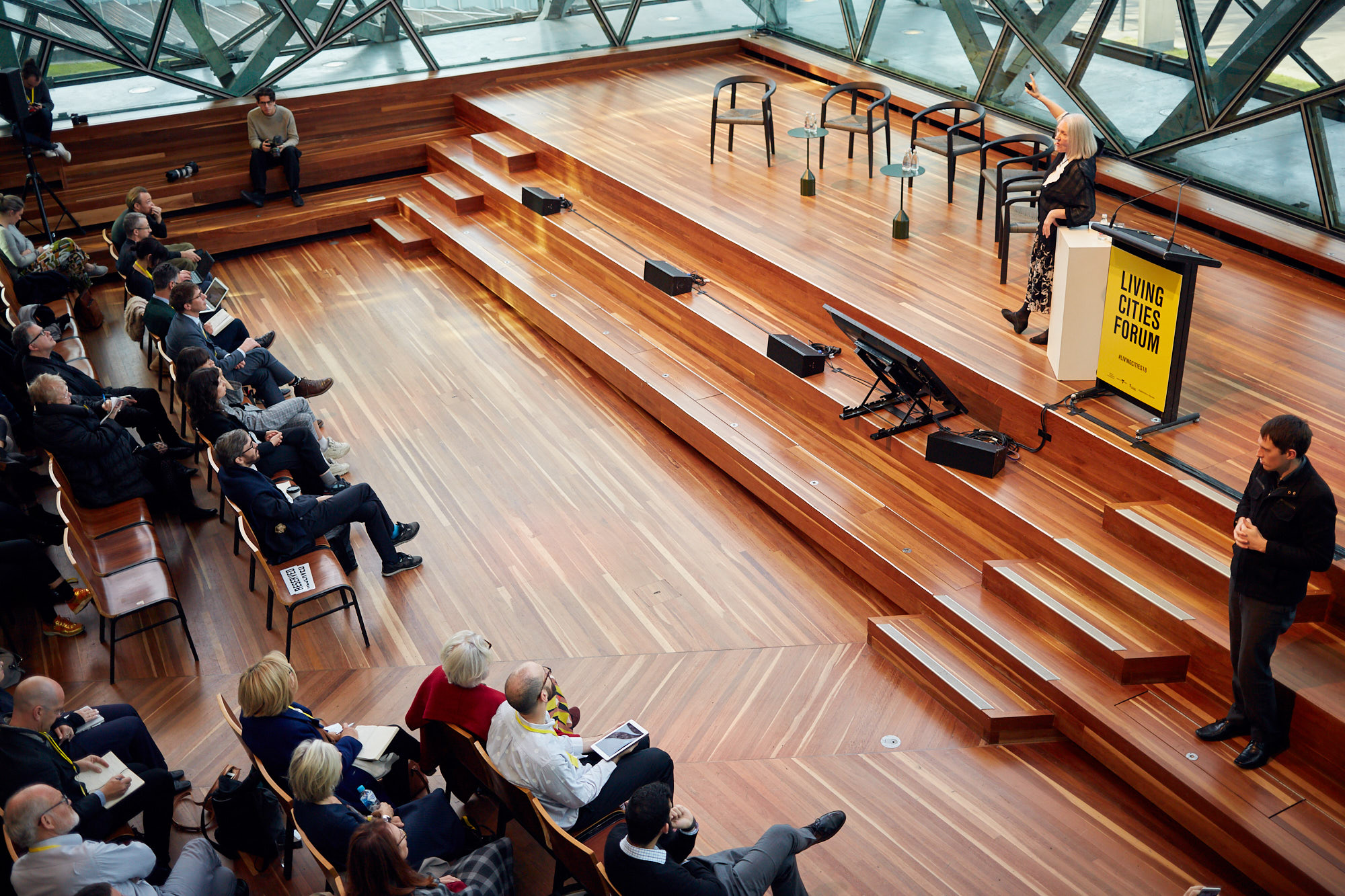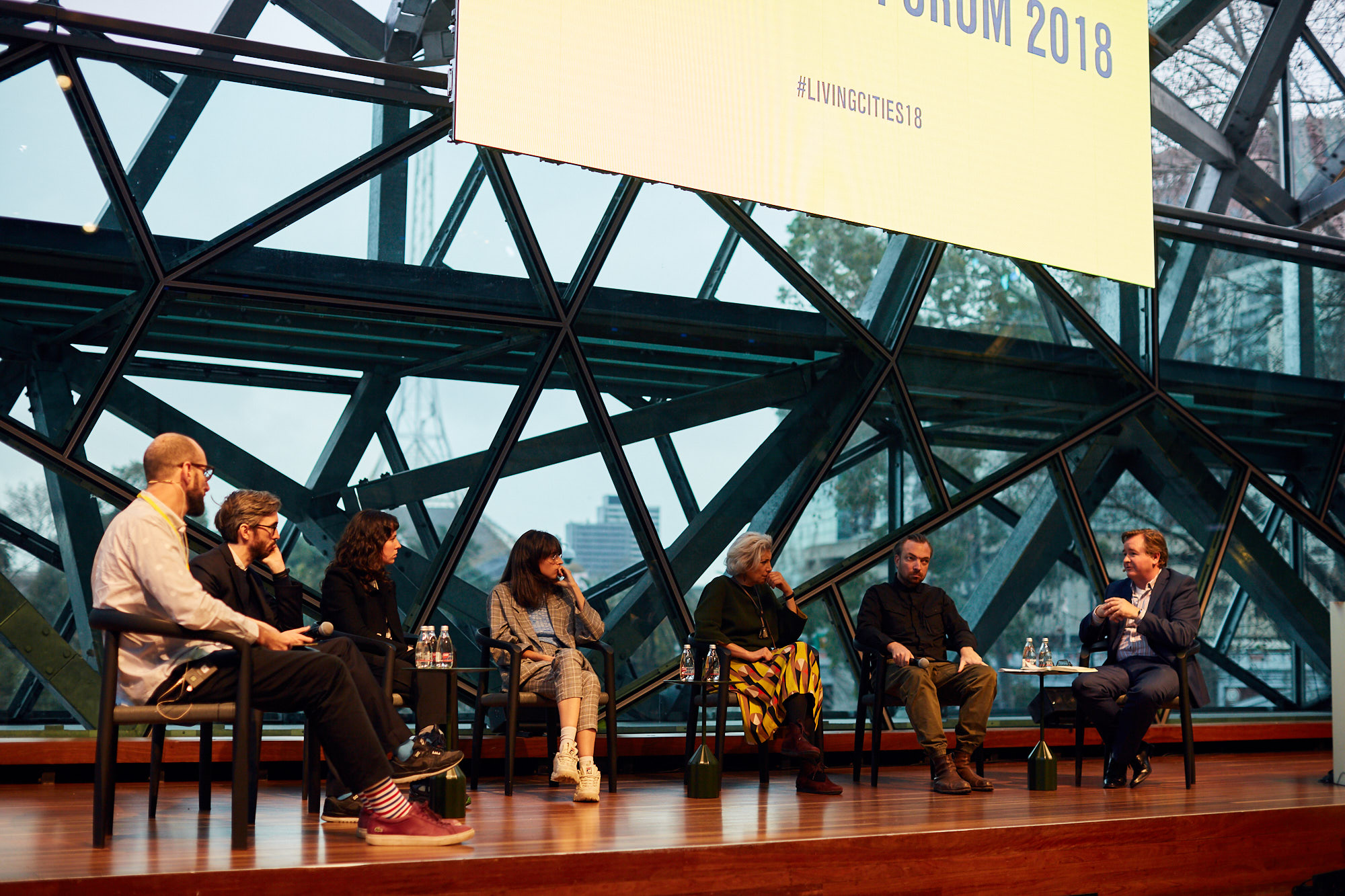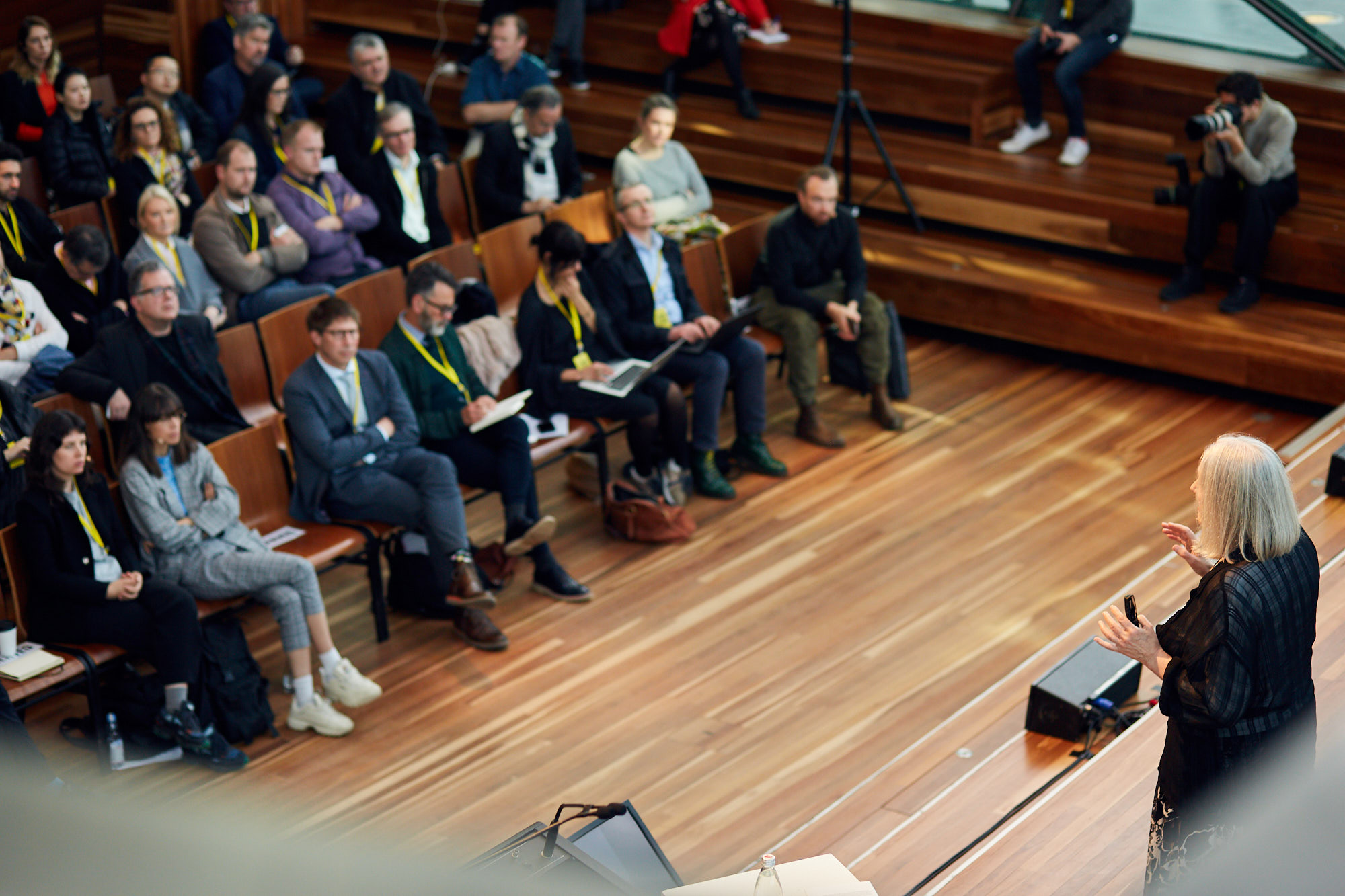Saskia Sassen on buildings as a global asset class

It is July 2018. Standing at the podium at Deakin’s Edge, Saskia Sassen is outlining the contours of a new world real estate order, one that is reshaping our cities through large-scale property speculation: “‘Property investment’ is the language used,” she says. “It’s not quite right. It’s a form of acquirement.”
She describes how 16 million subprime mortgage contracts were signed in the United States, of which 14.5 million went broke – the equivalent of the population of Sassen’s native Netherlands. She continues the list of the unsettling ways in which bricks and mortar have become monetised: buildings traded on the global market at a scale and speed never seen before, starting from global centres and spreading outwards, to second-tier markets such as Berlin, Hamburg, Shenzhen, Sydney and Melbourne. She notes that the Qatari royals now own more of central London than the Queen of England. “What are they going to financialise next?” Sassen asks, and not just rhetorically. “The city is full of materiality.”
The global property market is only one part of Sassen’s research. For decades now, the Dutch-American sociologist, who holds professorial positions at Columbia University and London School of Economics, has been one of the world’s chief experts on globalisation and its underpinning processes. Growing up in a trilingual household in Argentina gave Sassen a cosmopolitan and egalitarian sensibility that would serve her well in joining the dots between economic changes in the global North, and the trickle-down effects in the South. Her three major books gave us a language to imagine invisible processes: from international cross-border flows of people, to the centralisation of a few key ‘global cities’ – a term she coined – to the definition of a moneyed ‘intermediary sector’ oiling the wheels of capitalism.

Jana Perković
You recently said, “I’m always asked to talk about the future.” What do you think it is about your work that makes people ask that?
Saskia Sassen
As a scholar, I am interested in discovery, not application. Replicating is a mode of establishing how common is a certain condition, and I rely on scholars who replicate studies – but my mode is to discover. We, social scientists, have built knowledge silos, which makes our work less and less relevant. I see the need to work transversally, cut across different knowledge silos. There is an A and there is a D, and most people stay in one or the other, while I am interested in what’s in between, the B and the C. Each one of my big books takes me many years, and I am in no hurry to publish. It has sometimes gotten me into trouble. My first book got rejected by 12 publishers – that’s a lot! [laughs] So, I paid a price.
JPYour work shows an ability to see things at a panoramic scale: socioeconomic processes in wealthy countries and the matching socio-economic processes in poor countries. For example, your work on redefining migration, starting with your first book, The Mobility of Labor and Capital (1988).

SS In my first book, I was sniffing something out. We have this notion that migrants just come to us in rich countries. Well, there are about two billion poor people in the world, and about 300 million migrants – most poor people don’t migrate. So, who migrates?
When you start tracking who migrates, you realise that there is something that connects us. When we go around the world occupying, we establish links. We, the US, have about a thousand army bases around the world, mostly secret. We build bridges; and then the migrants come. This is an acute version of a process that can have a more diluted shape, too.
The law recognises two kinds of person: the migrant, established in national law, and the refugee, established in international law. Today, we see the emergence of a third subject, a refugee of certain modes of economic development. When she comes to our border, we figuratively say, “hey, but your country is going very well, the GDP per capita is growing!” But the land grabs, the mining, the massive numbers of small landholders expelled from their land… we don’t see that. We don’t recognise her as a migrant who might be in dire need of a job. I am very interested in this third subject, the migrant for whom there is no law, for whom we do not have a name. Studying her means discovering a condition, establishing a way of naming this person.
So, this is where I am. I am interested in this subject, who is invisible to the eye of the law, and who does not make sense as a migrant – because all those destructions we are generating, that are making her life impossible in her homeland, are measured as growth, as something very good.
At its narrowest, most academic, the global city function is intermediation. A whole new intermediate sector emerged in the late 1980s, that always made money, and never lost – even if they presided over mergers and acquisitions that failed – because they were producing knowledge for others.
JPIn The Global City (1991), you proposed a language for talking about the growing importance of a small number of ‘global cities’ in a globalised economy: hyperconnected cities offering a concentration of highly specialised knowledge workers, for transnational companies operating across territorial borders. How did the book come about?
SSIn The Global City, I was also trying to discover something. At the time I was living in New York, and most cities were poor: NYC was officially broke, Paris was poor, London was poor. The notion of growth was that it was the economy of infrastructure, building suburbs, great enterprises…
The digital was emerging very strongly. People were saying, “We don’t need cities, we can go anywhere, we can communicate from wherever.” I saw something else happening. Privatisation and deregulation (and out of that, globalisation) were ascendant. The image in my head was of a complex system installing itself in cities. Not emerging out of the city, installing itself.
I tried to talk to local experts about cities; these were mostly men, very narrowly focused, planners etc. I remember going to a conference, in the late 1980s. I’d go up to these guys and say, “I hear you’re really knowledgeable about New York. I’m interested in understanding what’s going on in Wall Street, and I wonder if you have any contacts for me…” And they would look at me – all men – and start laughing. “Wall Street is ours, but you know what, you can go at night,” they’d tell me. Wall Street had some machines operating, but it wasn’t a night district. And I said, “Oh, thank you.”
I had done a research project with Dominican immigrants, who were office cleaners. I arranged to have lunch with them – and lunch with cleaners is at midnight, you know. I knew something was happening in Wall Street, particularly one big clunky building, but you couldn’t tell from the outside – the newspapers were saying that the city is finished, it was invisible. So, I brought my sandwich and had lunch with them at midnight. I asked, “For whom are you cleaning?” One guy says, “Come, I’ll show you.” Small, boutique offices, very fancy. He says, “There are 70 nationalities here.” That was the data I needed: these were small, specialised, international businesses. It was everything: Goldman Sachs, but also highly specialised international advising of this and that. Law, investment advice on how to handle business in Mongolia… a world of knowledge, all geared towards making money. And the same stuff was happening in London, in Paris – a whole new intermediate sector!

SSWhen big corporations suddenly go global, operating in many different countries, they cannot do all the work in-house: they require so many particular modes of knowledge. You may need 25 hours of accounting the way they do it in China, 38 hours of legal work in Argentina… You need an intermediate sector.
At its narrowest, most academic, the global city function is intermediation. A whole new intermediate sector emerged in the late 1980s, that always made money, and never lost – even if they presided over mergers and acquisitions that failed – because they were producing knowledge for others.
Eventually, this translates into culture, into activism – it spreads. But at its core, here it was, a different type of economy: up to 30 – 40 percent very smart, often very young people, very networked, who became rich and powerful. That sector installs itself in cities. They bring a whole new wealth to cities. Not old wealth, not the prosperous middle classes, and not the top capos. But they made a lot of money, the knowledge-bearers.
It changed the city. Where before you may have had a modest home with three families living there, once they took over, it was a home for a single person. So now we had a whole new city, a city that displaces nurses, primary school teachers… Even though NYC was broke, it was an emergent condition that became visible. The system installs itself and, frankly, starts to take over.
In Manhattan, we have a number of luxury towers, all empty. People think investors are losing money, but what we now have is empty buildings that are a greater source of profit than occupied buildings. That’s really weird, you know?
JPYour work at that point in time provided an elegant explanation of how the globalised economy worked – something so obvious now, but so hard to see in 1991. How has globalisation changed since? What conditions are we dealing with now?
SSClearly, there is more than one globalisation. When Oxfam sets up a system where fairly isolated people – small farmers, fishermen – can upload and download information, that is a positive example. But the negatives have proliferated over the last decade: impoverishment of honest middle classes, working classes losing ground… The concentration of wealth is just extraordinary. The routinising of a political system that is no longer up to par. The ignorance of our legislators.
In my latest book, Expulsions: Brutality and Complexity in the Global Economy (2014), I was interested in understanding what I call ‘embedded borderings’. Interstate borders are just one kind of border; I was interested in border spaces that cut across countries, connecting both poor activists and the rich and the powerful.
JPIn Expulsions, you look at the surprising mechanisms behind the subprime mortgage crisis in the US, which has now been exported around the world. How is the very fabric of our cities, our housing, changing?

SSBy the term ‘expulsion’ I tried to capture something that signals the limits of the material. We tend to think that a wall is a wall. But a lot of the material today has lost the capacity to be ‘speech’, in an abstract sense. When you financialise buildings through algorithmic mathematics, as is happening now, the building is still there, yes, but the actual operational event is not the building as such – it’s an algorithmic formula. You can buy and sell that building several times a day. In Manhattan, we have a number of luxury towers, all empty. People think investors are losing money, but what we now have is empty buildings that are a greater source of profit than occupied buildings. That’s really weird, you know?
JPWhy are they so profitable? Are they appreciating in value?
SSNo. It’s not about the economy. A building is no longer simply a building. It’s been transformed into an asset. The high wave investment circuit has had it with derivatives [futures, options, and other, often nebulous, financial securities – ed.]. They’re now sending derivatives to the average person: municipal governments are buying derivatives without realising. In Italy, about half a year ago, 14 municipal governments went broke simultaneously, because the derivative had failed. The high investment circuit says: give me asset-backed securities. That’s what the subprime mortgage crisis was about. It wasn’t about mortgages. They used very modest people, who didn’t own a house, to experiment. 14.5 million households went broke in 7 to 8 years; another invisible story. And now they’re doing it with very fancy buildings.
JPWhen you talk about the changing spatiality of the nation-state, in Expulsions, you use an interesting turn of phrase: falling off the ‘systemic edge’. What do you mean by that?

SSThe easiest example for what that means is the long-term unemployed: they really do become invisible to the eye of the law, the eye of the system. They fall off the edge… The body is still there, but they are invisible: not counted, not recognised.
It intrigues me how the material can become less material… We tend to think that a building is a building is a building. Well – not necessarily! If you have transformed it via 16 really complex steps into something else, the building is there, but its real function is invisible to our eyes. I’m really interested in how the material has a bit less traction than it used to. So much has been financialised.
JPYou have recently written about colonialisation and how it is geographically changing. Between intrusions of multinationals and new refugee flows, what is sovereign national territory today?
SSThat’s a big subject for me. We’re obsessed with the traditional interstate borders, but there are other borderings we should be paying attention to. One is the corporate world that can very easily morph from one country to another. They have their own, very partial geographies and, like financial centres, they don’t care about the rest of the country! But then I look at human rights activists, especially those people interested in recovering bodies in mass graves, they too are not interested in the whole country, only specific sites. There is a long list of cases in which the territorial has enormous specificity for different actors. And yet both parties in these two cases still need to get a document that allows them access to the country – but they are not interested in ‘the country’, they are interested in a very specific thing! This is what I mean by ‘embedded borderings’: there are many more at play than we realise. Whether interstate borders are becoming weaker or stronger is open to debate. But there are other borderings for those living now.
A very warm thanks to Saskia, one of our intellectual heroes, and to Naomi Milgrom Foundation for making this conversation happen. You can find out more about Prof Sassen’s work on her website. This article also appears in AP#10: Housing – get your free copy through our stockists!